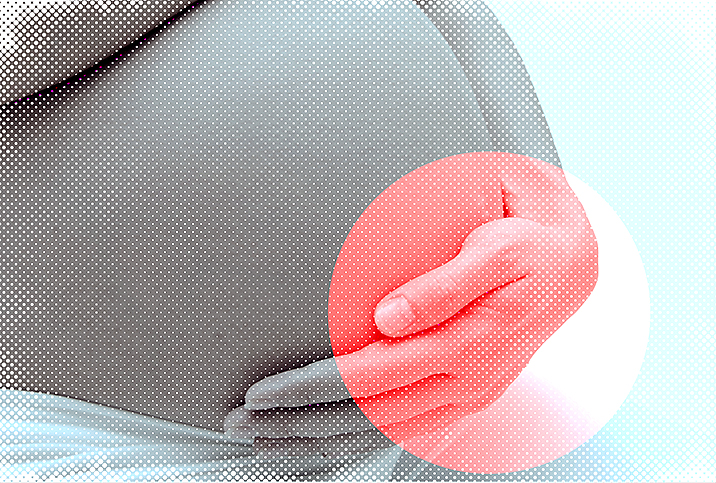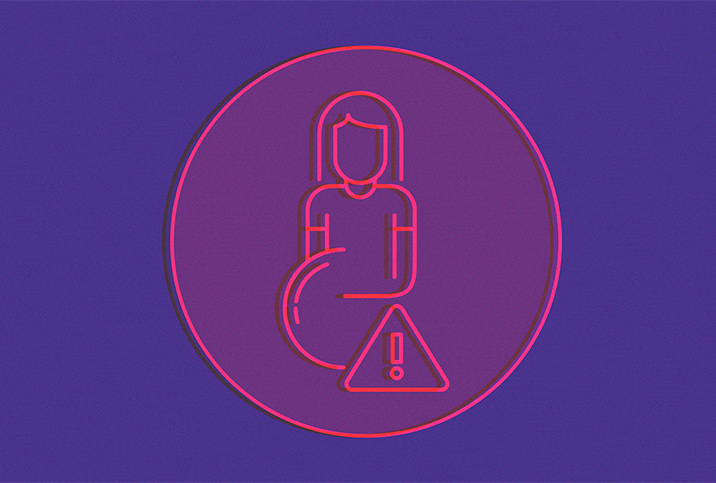Can Pregnancy Cause Carpal Tunnel Syndrome?

Legally and culturally, now may be the best time in history to be pregnant in the modern corporate workplace. However, there's a common occupational hazard that's been on the rise over the past two centuries, and it's the perfect foe for an expectant mother. Carpal tunnel syndrome (CTS) is an infamous contributor to workplace disabilities because it impacts the hands and wrists. Numbness, tingling, weakness and pain in the hands is caused by persistent pressure put on wrist nerves.
Jobs requiring awkward placement of the hands, vibration and repetitive fine motor tasks are ripe for CTS. A gamut of careers necessitate those conditions, but particularly desk jobs, factory assembly and food service. On top of that, women are already more vulnerable to the condition at a rate 3.3 times higher than men.
CTS and pregnancy
So why would CTS be the bane of pregnant women's existence now as well as before the dawn of the modern workplace? When the human body is tasked with nourishing the rapid growth of an embryo into a baby, the mother's body requires a huge increase in blood supply. Besides transferring nutrients, this is the body's form of insurance against losing too much blood in the actual delivery.
Starting six weeks to two months after gestation, and lasting the entire pregnancy, a woman's blood supply can rise 20 percent above prepregnancy levels to eventually double. This drastic, rapid increase is the reason pregnant women require iron and folic acid, and develop bizarre cravings if those needs aren't met.
Imagine your veins are hoses and your blood supply is the water flow. Before pregnancy, the water traveling through those hoses is steady but not overwhelmingly powerful. If the amount of water increases in volume from one-fifth to double and the hoses stay the same size, there's going to be a lot of pressure put on the walls of the hoses. We now have the perfect conditions for CTS. Circulatory issues inflict the most damage on parts of the body farthest from the heart, which is to say the extremities—your hands and feet. Pregnant women and swollen feet are as famous and age-old a duo as any.
Now, we've got a body full of hoses adjusting to far more liquid than they've ever had to accommodate, and the hardest-to-reach hoses are contorted and kept at odd angles for as much as eight hours per day. Given this information, how could pregnant women not be at risk for CTS?
Possible preventions and preeclampsia
There's hope, as lifestyle changes and safety precautions can decrease your risk of acquiring CTS or at least reduce discomfort. Nonsurgical treatments such as sleeping with a wrist brace or discussing taking anti-inflammatory drugs that aren't steroids with your medical provider to potentially treat CTS can help. Other easy adjustments throughout the day could serve as preventive measures, such as changing your wrist and hand position if possible, investing in an ergonomic keyboard and comfortable chair, and completing prescribed exercises and heat treatments.
CTS can be a symptom of larger problems for pregnant women. A sudden swelling in the hands anywhere from early in the second trimester to weeks after delivery may signal a woman has developed preeclampsia. Preeclampsia is a condition identified by a spike in blood pressure, even in women who didn't have high blood pressure before becoming pregnant.
This development may significantly alter your birth plan, as your healthcare provider may recommend inducing labor early or performing a C-section to prevent dangerous levels of bleeding in delivery. Postpartum preeclampsia, or suddenly high blood pressure after giving birth, is far less common but extremely serious.
So while pain reduction is important, it's also essential to communicate clearly and frequently with your healthcare provider. Developing CTS isn't just an unpleasant afterthought. Keeping track of the condition and communicating your experience with your birth team may be vital to keeping you and your baby safe.


















